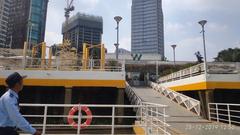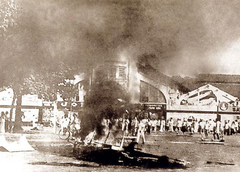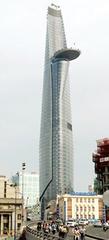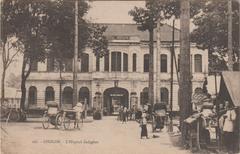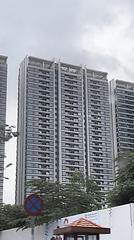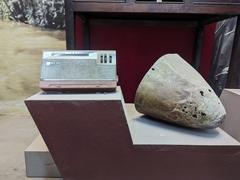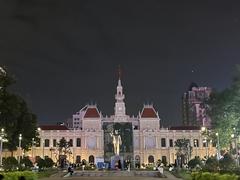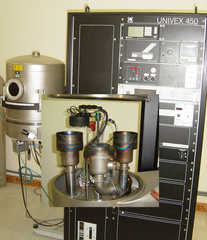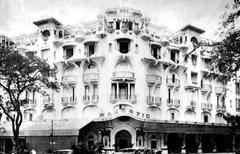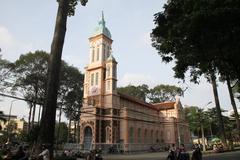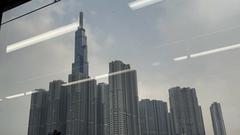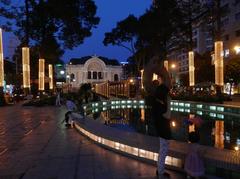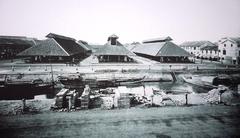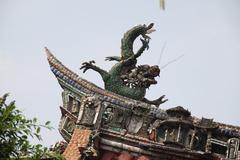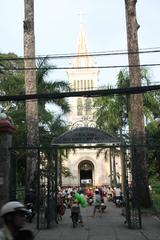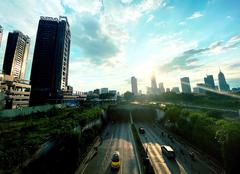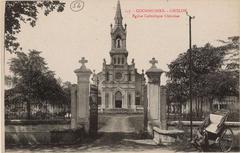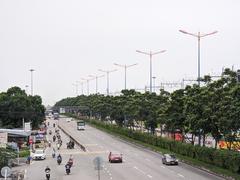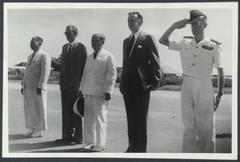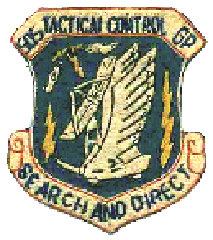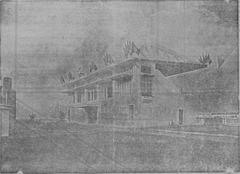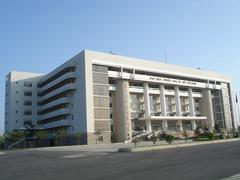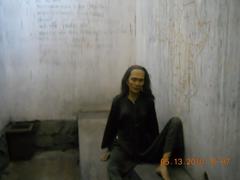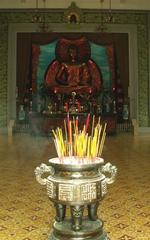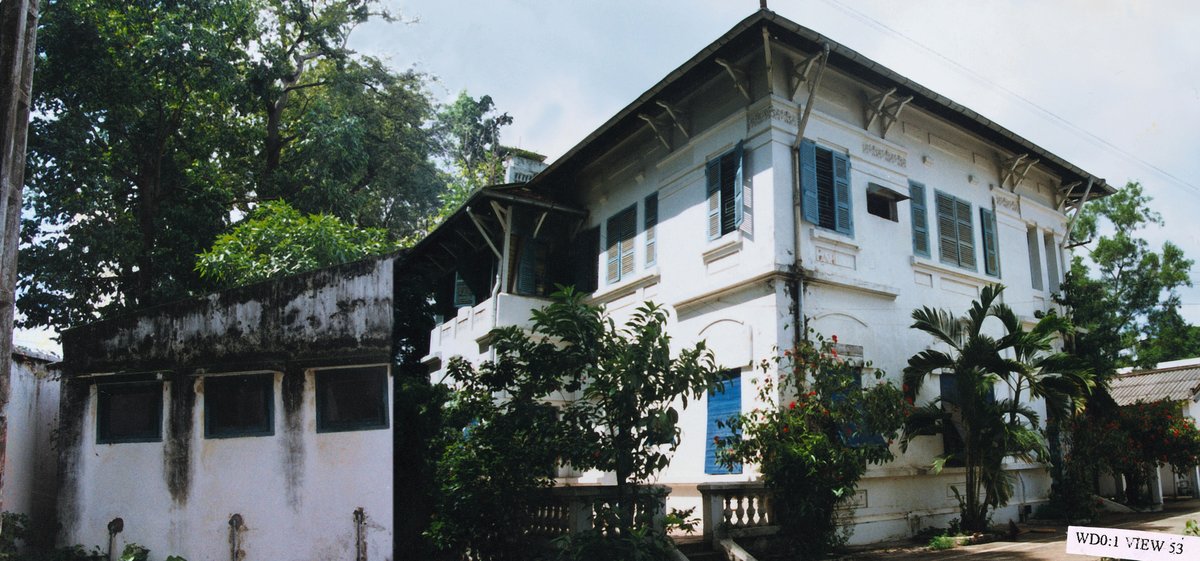
Visiting the Embassy of the United States Saigon Ho Chi Minh City Vietnam: Tickets, Hours, and Guide
Date: 14/06/2025
Introduction: The U.S. Embassy in Saigon—History and Significance
The former Embassy of the United States in Saigon, now Ho Chi Minh City, stands as an enduring symbol of 20th-century diplomacy, conflict, and reconciliation. While the original embassy building was demolished in the late 1990s, its legacy remains deeply woven into the city’s landscape and the broader narrative of U.S.-Vietnam relations. From its founding during the post-World War II era and its pivotal role during the Vietnam War—including the 1968 Tet Offensive and the dramatic evacuation in April 1975—the embassy is closely linked to defining moments that shaped both nations (Time.com Vietnam War History, Wikipedia Embassy of the United States, Saigon).
Today, the U.S. Consulate General at 4 Le Duan Boulevard occupies part of the historic embassy site. While public access is restricted, the area around the consulate remains a place of reflection and interest. This guide offers a detailed overview of the embassy’s historical context, essential visiting information, and tips for exploring related landmarks in Ho Chi Minh City.
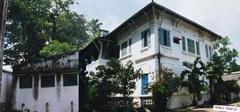
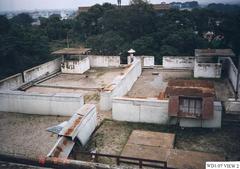
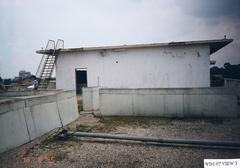
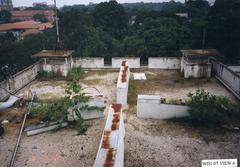
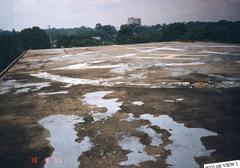
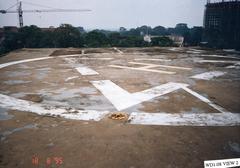

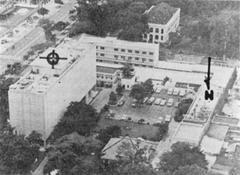
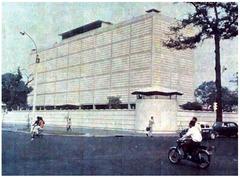
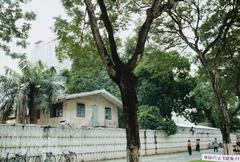
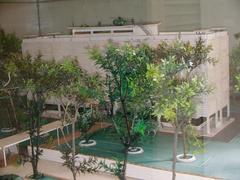
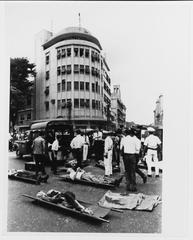
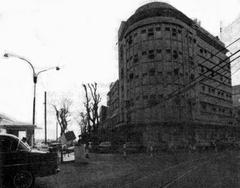
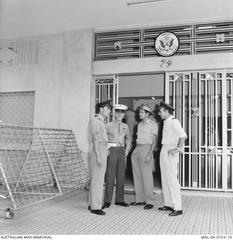
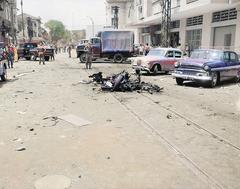 [1] Additional photos of the bombing such as [2] [3] [4] show identical wreckage and building facades. GabrielF (talk) 19:56, 22 May 2012 (UTC)">
[1] Additional photos of the bombing such as [2] [3] [4] show identical wreckage and building facades. GabrielF (talk) 19:56, 22 May 2012 (UTC)">
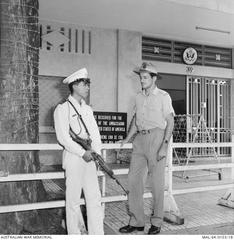
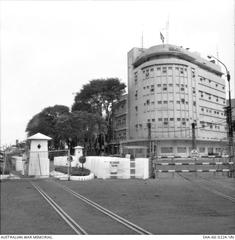
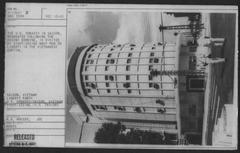
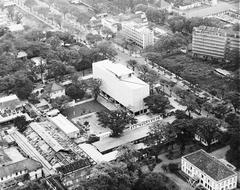
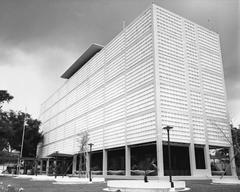
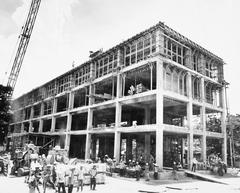

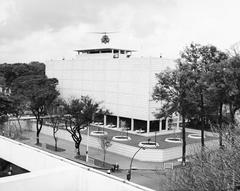
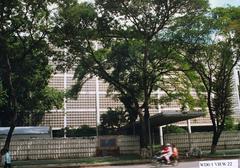
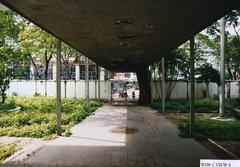
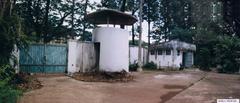
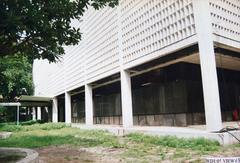
Table of Contents
- Introduction: History and Significance
- Origins and Development of the U.S. Embassy in Saigon
- The Embassy’s Role During the Vietnam War
- Legacy and Modern Significance
- Practical Visitor Information
- Nearby Historical Sites
- Frequently Asked Questions (FAQ)
- Conclusion
- References
Origins and Early Development of the U.S. Embassy in Saigon
The U.S. diplomatic mission in Saigon began in 1907 as a consulate, later upgraded to embassy status in 1952 amid growing American involvement in Vietnam (Wikipedia Embassy of the United States, Saigon). Initially located at 39 Hàm Nghi Boulevard, the embassy relocated in 1967 to a fortified new building at 4 Thống Nhất Boulevard (now Lê Duẩn Boulevard), designed for enhanced security as tensions escalated in the region (Holiday in Vietnam).
The new structure quickly became the symbolic center of American commitment to South Vietnam during the Cold War.
The Embassy’s Role During the Vietnam War
Command and Coordination
Throughout the 1960s and early 1970s, the embassy functioned as the nerve center for U.S. diplomatic, military, and intelligence activities in South Vietnam. Under ambassadors such as Ellsworth Bunker, it housed strategic planning and was the focal point of U.S.-South Vietnamese relations (AFSA).
The 1965 Bombing
On February 28, 1965, a devastating car bomb exploded outside the embassy, killing 22 and injuring 183. This attack exposed vulnerabilities even within fortified compounds and intensified public debate about America’s role in Vietnam (Dayhist.com Saigon Embassy Bombing).
The Tet Offensive and the 1968 Embassy Attack
The Tet Offensive on January 30, 1968, saw Viet Cong commandos breach the embassy’s outer walls in a surprise attack. Though U.S. Marines and security forces repelled the intruders, the event was broadcast globally, shaking confidence in U.S. control and sharply influencing public opinion back home (Time.com Vietnam War History, AFSA).
The Fall of Saigon and Operation Frequent Wind
In April 1975, as North Vietnamese forces advanced on Saigon, the embassy became the site of Operation Frequent Wind, the largest helicopter evacuation in history. Over 7,000 Americans and Vietnamese allies were airlifted from the embassy rooftop, culminating in the iconic image of evacuees climbing a ladder to a helicopter—an enduring symbol of the war’s chaotic end (Atlas Obscura, Kathmandu & Beyond).
Post-War Legacy, Demolition, and Surviving Artifacts
After 1975, the embassy building was abandoned and later returned to the U.S. government in 1995 with the normalization of diplomatic ties. Due to disrepair, the structure was demolished in 1998. Today, the U.S. Consulate General occupies the site, with several artifacts remaining—including concrete planters used as defensive positions during the Tet Offensive, a historic banyan tree, and the original embassy flagpole (Wikipedia Embassy of the United States, Saigon, Atlas Obscura).
The rooftop stairway used during the 1975 evacuation is now displayed at the Gerald R. Ford Presidential Museum in Michigan.
Symbolic and Cultural Significance
The embassy site serves as a place of memory for both Americans and Vietnamese. For U.S. veterans, it represents sacrifice and the war’s complexities; for Vietnamese, it is a symbol of both division and national reunification. The site frequently attracts veterans, historians, and those interested in the Cold War era (Saigoneer).
Its dramatic moments have been immortalized in documentaries, books, and films, particularly the 1968 Tet Offensive and the 1975 evacuation (Kathmandu & Beyond).
Practical Visitor Information: U.S. Consulate General Ho Chi Minh City
Location and Contact
- Address: 4 Le Duan Blvd., District 1, Ho Chi Minh City, Vietnam, 70000
- Phone: +84-8-3520-4200
- Official Website: https://vn.usembassy.gov/ho-chi-minh/
Visiting Hours and Access
The U.S. Consulate General operates Monday through Friday, 8:00 AM to 5:00 PM, and is closed on weekends and U.S./Vietnamese public holidays. Public access is limited to those with appointments; walk-ins are not permitted. There are no public tours or ticketing for the embassy site. Visitors may view the compound and some surviving features from the street.
To book appointments for consular services, visit the official appointment page.
Security and Protocols
- All visitors must have an appointment and valid photo ID
- Security screening is mandatory
- No photography is permitted inside the compound
- Large bags and electronic devices may not be allowed
Accessibility
The consulate area is wheelchair accessible. For special assistance, contact staff in advance.
Visa and Entry Requirements
Travelers to Vietnam need a valid visa, which can be obtained via e-visa, visa on arrival, or through Vietnamese embassies and consulates. Ensure that your passport is valid for at least six months (VietnamOnline.com Visa Information).
Nearby Ho Chi Minh City Historical Sites
The consulate is centrally located near several significant landmarks:
- Reunification Palace: Site of the war’s end and a museum open to visitors (Official Reunification Palace Website)
- War Remnants Museum: Detailed exhibits on the Vietnam War
- Notre-Dame Cathedral Basilica of Saigon: French colonial-era landmark
- Ben Thanh Market: Famous market for local culture and cuisine
Combine your visit to the embassy site with these attractions for a comprehensive historical experience (The Common Wanderer).
Frequently Asked Questions (FAQ)
Q: Can I visit the original U.S. Embassy building in Saigon?
A: The original building was demolished in 1998. The site is within the U.S. Consulate General’s grounds; public access is restricted but the location can be viewed from outside.
Q: Are guided tours available?
A: No public tours are offered. Special arrangements may be possible for official or veterans’ groups through formal requests.
Q: Do I need an appointment to visit the consulate?
A: Yes, all visitors must book an appointment in advance. Walk-ins are not accepted.
Q: Are there tickets or entrance fees?
A: No tickets or fees are required to view the site from the street. Museum entry fees apply to nearby attractions.
Q: Is the area accessible for visitors with disabilities?
A: The sidewalks and surrounding public areas are wheelchair accessible.
Conclusion
The former U.S. Embassy site in Saigon remains a profound symbol of the Vietnam War, diplomacy, and reconciliation. While the original building is gone, surviving artifacts and the U.S. Consulate General’s presence ensure the site’s legacy endures. Visitors to Ho Chi Minh City can gain meaningful insights by viewing the site, exploring nearby historical landmarks, and reflecting on the complex history that binds Vietnam and the United States.
For the most up-to-date information, download the Audiala app, consult official resources, and follow safety and cultural guidelines during your visit.
References
- Time.com Vietnam War History
- Dayhist.com Saigon Embassy Bombing
- VietnamOnline.com Visa Information
- Wikipedia Embassy of the United States, Saigon
- U.S. Embassy & Consulate in Vietnam Official Website
- Atlas Obscura Site of the Former U.S. Embassy to South Vietnam
- Kathmandu & Beyond Vietnam War Heritage Ho Chi Minh City
- Saigoneer In Search of Saigon’s U.S. Vestiges
- The Common Wanderer Ho Chi Minh City Travel Guide
- Official Reunification Palace Website
